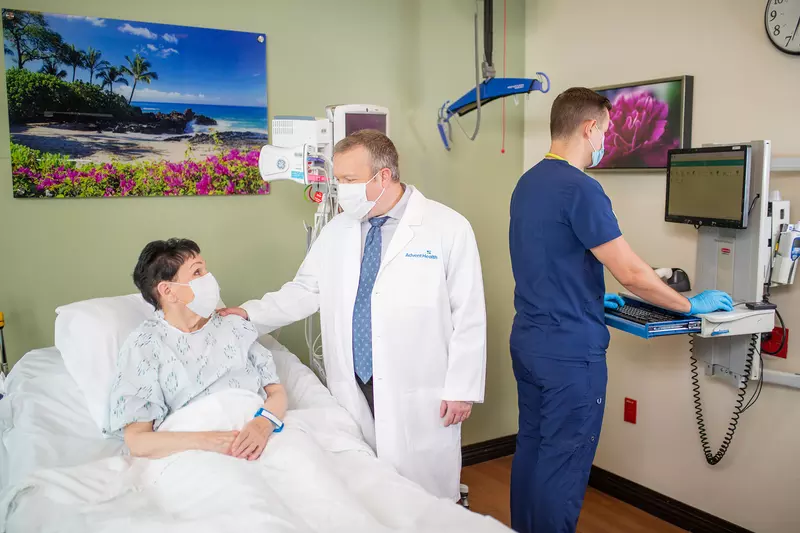
By Your Side With Chordoma Care
Finding out that you have a chordoma tumor can feel overwhelming. But knowing you have an experienced and compassionate team beside you can give you hope and strength for the road ahead.
Our team is ready to meet you and your family where you are to answer your questions, ease your mind, help you understand your chordoma prognosis and develop a treatment plan that’s right for you.
Understanding Chordoma
- What Is Chordoma?
-
Chordoma tumors are often called brain tumors, but they don’t develop in the brain. Instead, they grow along the spine, often at the base of the skull.
Chordomas grow slowly and most often develop in adults between the ages of 40 and 70. They rarely cause serious symptoms until they’re large, making them hard to detect early. Researchers aren’t sure why, but men are twice as likely to develop chordomas than women.
- Chordoma Signs and Symptoms
-
Because they grow so slowly, the symptoms of a chordoma might not be very noticeable at first. But as the tumor grows, you may experience more troubling symptoms, such as:
- A sizeable chordoma lump
- Endocrine problems
- Sexual dysfunction
- Tingling, numbness or weakness
- Trouble swallowing
- Urinary or fecal incontinence
- Vision problems
- How Chordoma Is Diagnosed
-
If you or your doctor think you might have a chordoma tumor, you’ll work with a neurosurgeon who can oversee the specific tests and procedures needed for a chordoma diagnosis, which may include:
Biopsy
A biopsy collects a small sample of cells through a hollow needle that’s inserted into your skin. The cell sample is sent to a laboratory to be examined by pathologists who are trained to identify cancer cells.
Imaging Tests
Imaging tests, such as computed tomography (CT) scans and magnetic resonance imaging (MRI), can identify the location and size of a chordoma tumor. These images can also help guide a biopsy.
- Chordoma Treatment
-
Chordoma treatment varies. What your doctor recommends will depend on the size and location of the chordoma tumor and your overall health. Chordomas can be especially difficult to treat if they’re on or near the carotid artery, the spinal cord, brain tissue and other nerves.
Chordoma cancer can also sometimes reoccur, so your doctor will closely monitor your health during and after treatment. For this reason, each patient’s chordoma treatment plan needs to be personalized. Your doctor may recommend:
- Chemotherapy
- Radiation therapy
- Surgery
- Targeted therapies

Find Care, Feel Confident
When you’re being treated for a chordoma tumor, you need to feel confident in the care you’re getting. At the AdventHealth Neuroscience Institute, we’re dedicated to using all of our expertise to surround you with compassionate care that works for you.

